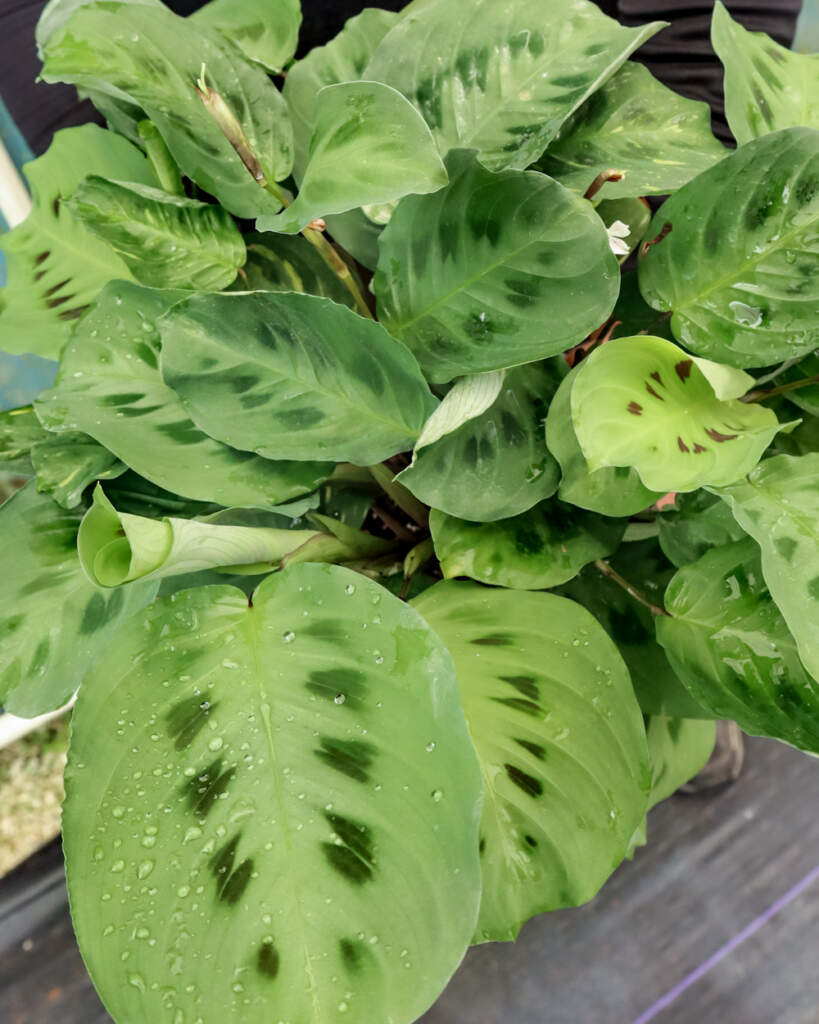
Maranta plants, commonly known as Prayer Plants, are cherished for their stunning foliage and unique leaf movements. Native to the tropical regions of Central and South America, Marantas belong to the Marantaceae family and encompass several species and cultivars, each with its own distinctive characteristics. In this comprehensive care guide, we will explore everything you need to know to keep your Maranta plants healthy and thriving.
Maranta plants are renowned for their ornate foliage, which features vibrant hues and intricate patterns. One of the most distinctive traits of Marantas is their leaf movements, which fold upward at night, resembling hands in prayer, hence the common name “Prayer Plants.” This natural behavior is governed by the plant’s circadian rhythm and adds an enchanting dynamic to its allure.
Light Requirements
Maranta plants thrive in bright, indirect light. While they can tolerate some direct sunlight, prolonged exposure can lead to leaf scorching. Place your Maranta plant near a window with sheer curtains or in a well-lit room away from direct sunlight. Inadequate light can result in leggy growth and loss of vibrancy in the foliage.
Temperature and Humidity
Maintaining the right temperature and humidity levels is crucial for the health of Maranta plants. They prefer temperatures between 65°F to 75°F (18°C to 24°C) during the day and slightly cooler temperatures at night. Additionally, they thrive in high humidity environments, ideally between 50% to 60%. You can increase humidity by misting the leaves regularly, placing a humidity tray filled with water and pebbles beneath the plant, or using a room humidifier.
Watering
Proper watering is essential for the well-being of Maranta plants. They prefer consistently moist soil but are susceptible to root rot if overwatered. Allow the top inch of soil to dry out slightly between waterings, then water thoroughly until excess water drains from the bottom of the pot. During the growing season (spring and summer), you may need to water more frequently, while in the winter months, you can reduce watering frequency.
Soil
Maranta plants thrive in well-draining, peat-based potting mixtures with added perlite or sand to improve drainage. A slightly acidic to neutral pH soil (pH 6.0 to 7.0) is ideal for optimal growth. Avoid using heavy soils or those that retain too much moisture, as they can lead to root rot and other issues. Repotting may be necessary every 1-2 years to refresh the soil and provide adequate space for root growth.
Fertilizing
During the growing season (spring and summer), fertilize your Maranta plant monthly with a balanced, water-soluble fertilizer diluted to half strength. Avoid fertilizing during the winter months when the plant’s growth slows down. Over-fertilizing can lead to fertilizer burn and other nutrient-related issues, so it’s essential to follow the recommended dosage and frequency specified on the fertilizer label.
Pruning and Maintenance
Regular pruning helps maintain the health and appearance of Maranta plants. Remove any yellowing, damaged, or dead leaves promptly to encourage new growth and prevent the spread of disease. You can also trim back leggy stems to promote bushier growth and improve the plant’s overall appearance. Additionally, periodically clean the leaves with a damp cloth to remove dust and debris, allowing them to photosynthesize more effectively.
Propagation
Maranta plants can be propagated easily through division or stem cuttings. To propagate by division, carefully separate the plant into smaller sections, ensuring each division has a healthy root system and a few stems with leaves. Plant the divisions in separate pots filled with well-draining potting mix and keep them in a warm, humid environment until they establish roots. Alternatively, you can propagate Maranta plants from stem cuttings by taking a cutting with at least one leaf node and rooting it in water or moist potting mix.
Common Pests and Problems
While Maranta plants are relatively resilient, they may encounter occasional pest infestations or issues such as leaf browning, yellowing, or curling. Common pests that affect Marantas include spider mites, aphids, and mealybugs. Monitor your plants regularly for signs of pests and treat infestations promptly with natural or chemical insecticides. Additionally, ensure proper watering practices and maintain adequate humidity levels to prevent leaf problems caused by underwatering or low humidity.
Seasonal Care Tips
During the winter months, when indoor air tends to be drier, take extra precautions to maintain humidity levels around your Maranta plants. You can place a humidifier near the plants, group them together to create a microclimate, or mist them more frequently to prevent leaf browning and curling. Additionally, reduce watering frequency during the winter to prevent waterlogged soil and root rot, as the plant’s growth slows down during this time.
Maranta plants are delightful additions to any indoor space, adding beauty and elegance with their vibrant foliage and unique leaf movements. By providing them with the right growing conditions, including proper light, humidity, watering, and maintenance, you can enjoy lush, healthy Maranta plants for years to come. With a little care and attention, your Prayer Plants will continue to captivate and inspire admiration, bringing joy and tranquility to your home or office environment.


